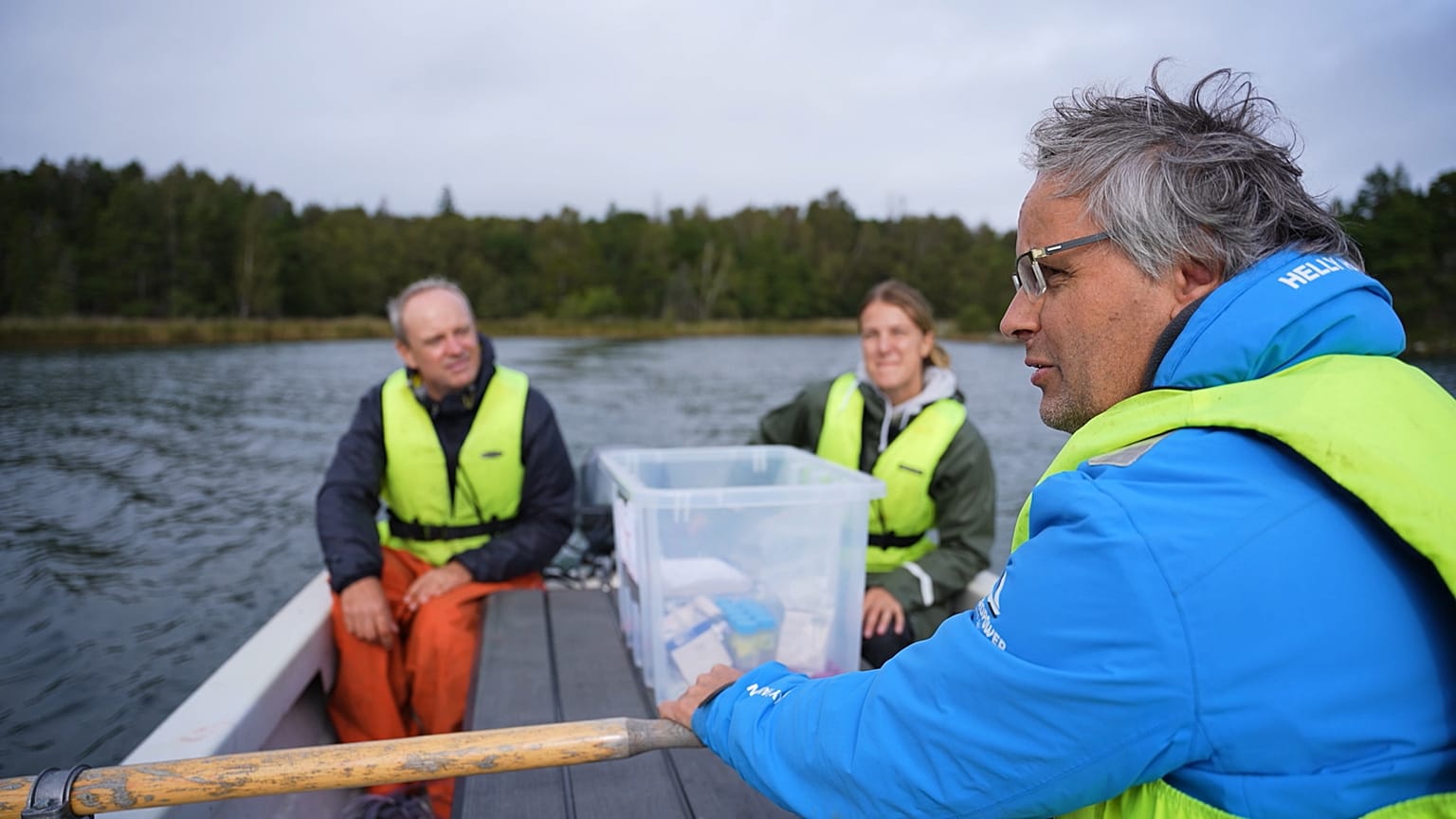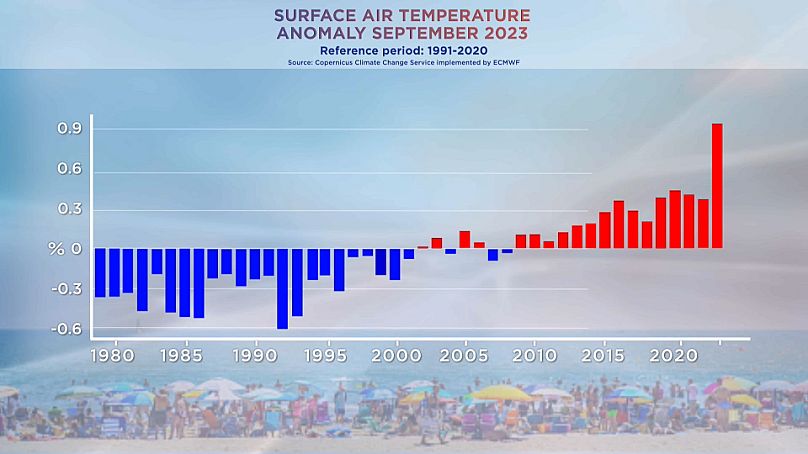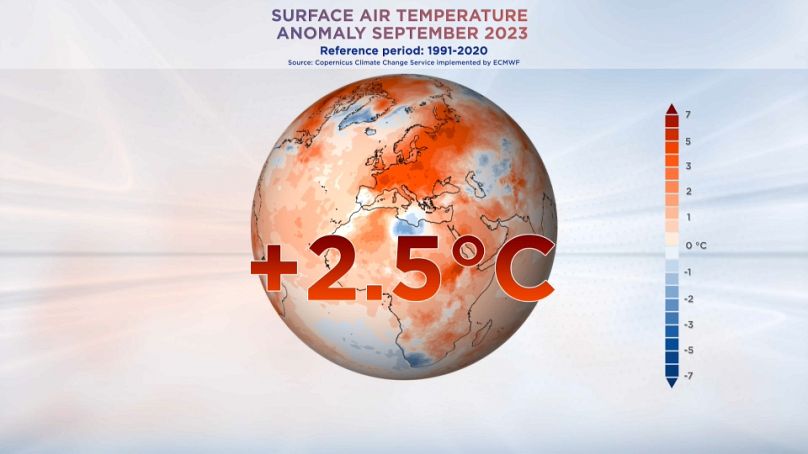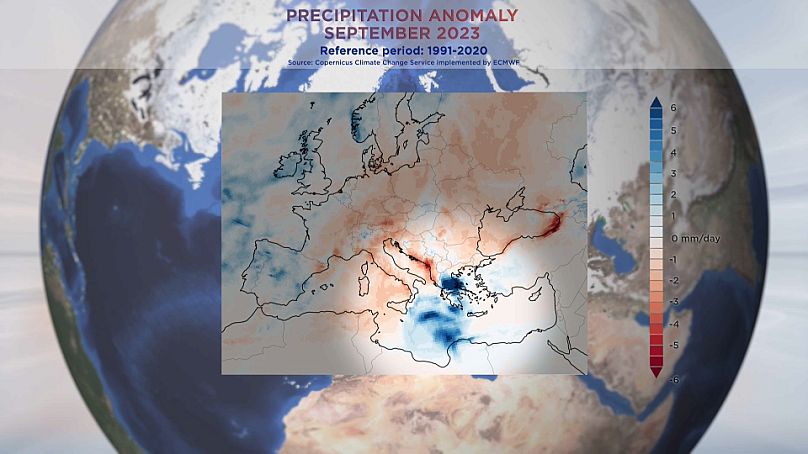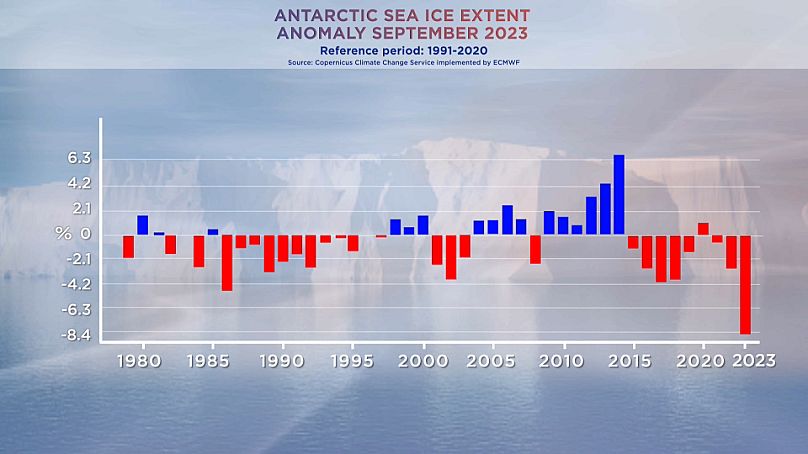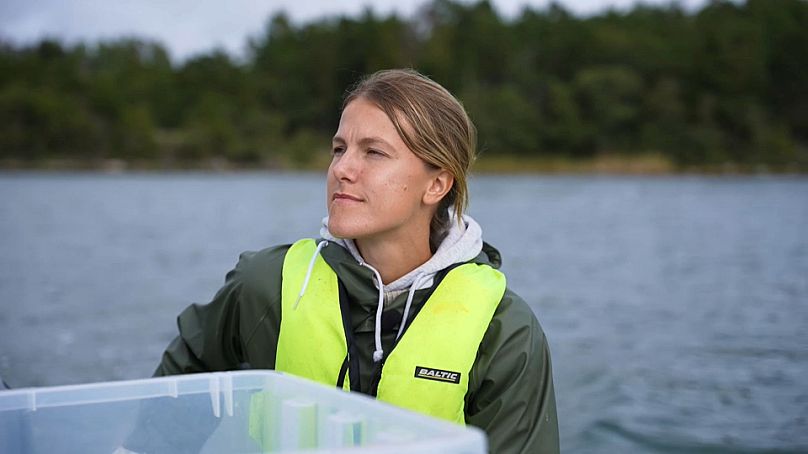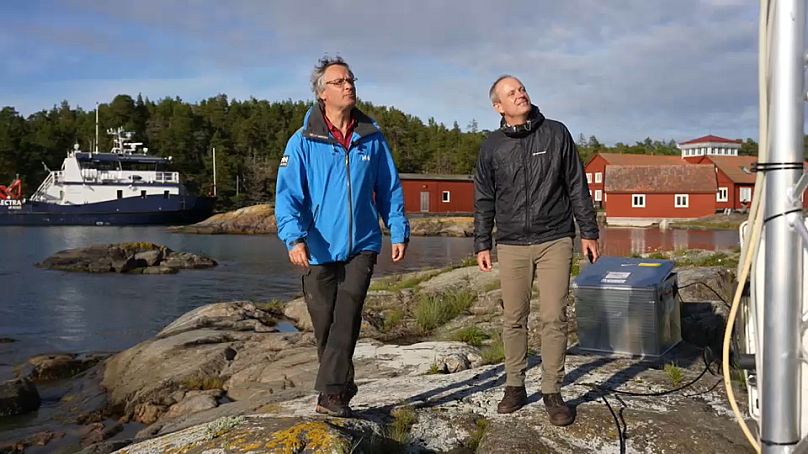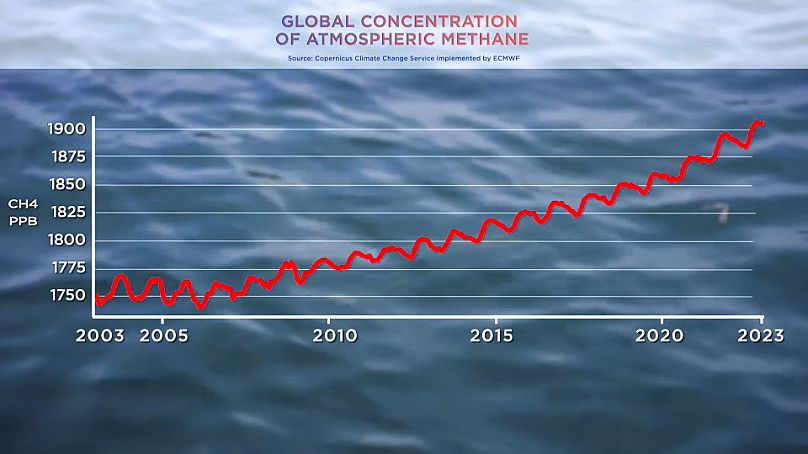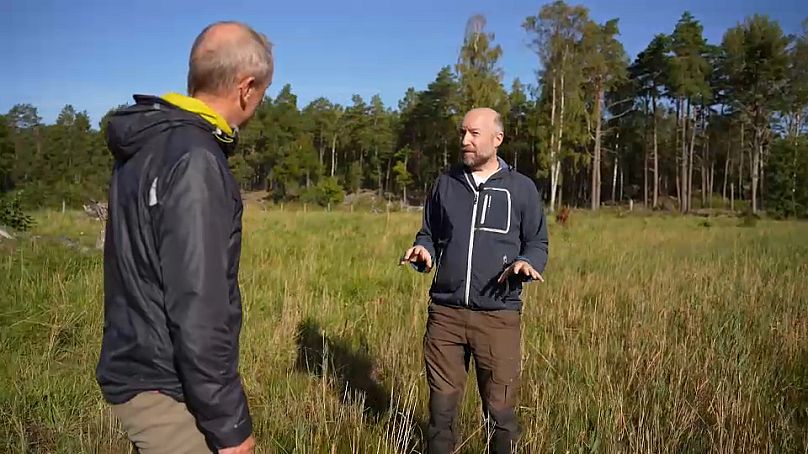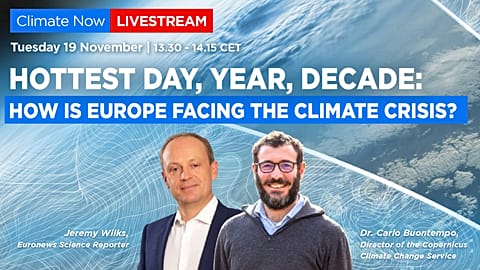In this episode of Climate Now, we meet researchers in Sweden trying to find out why levels of the climate-warming gas methane are rising so sharply. Could it be a natural response to a hotter planet?
Scientists at the Askö research base in southern Sweden are investigating a methane mystery. They're concerned, because levels of methane in the atmosphere are rising rapidly and nobody is quite sure why.
Warmest September ever recorded
First, let's take a look at the latest data from the Copernicus Climate Change Service. Globally, it was the warmest September on record by a large margin, with temperatures 0.9 degrees above the 1991-2020 average.
In Europe, September was the warmest ever, with a huge temperature anomaly of 2.5 degrees Celsius above average.
France, Belgium, Germany, Poland, and Austria were among the countries that had their hottest September on record.
It was hot, and in parts of Europe and North Africa, it was unusually rainy. This map of precipitation anomaly below shows in dark blue the heavy rain associated with Storm Daniel. It led to devastating and deadly floods in Libya, Greece, Turkey and Bulgaria.
Meanwhile, in Antarctica, the sea ice extent was 9% below the 1991-2020 average for September.
This is the fifth month in a row that Antarctic sea ice has been at a record low level for the time of year.
Where is all this methane coming from?
Methane concentrations in our atmosphere are rising. This is a cause for concern because methane is a powerful greenhouse gas.
We met scientists in Sweden who are on a mission to measure natural sources of methane, a climate-warming gas with no colour or smell.
It's emitted by a huge variety of man-made and natural sources, and researchers want to know how much is coming from coastal areas, such as the Baltic seascape around Askö. This kind of environment is seldom monitored, but it probably should be.
"We have put a chamber on top of the water surface that's going to measure methane, carbon dioxide and water vapour," explained Thea Bisander, a PhD student at Södertörn University in Huddinge, Sweden.
"Generally, the methane is coming from the seafloor, but what kind of habitats are emitting what kind of amount? That is the tricky part," she told Climate Now.
Working out how much methane is coming from lush coastal areas is a small but important step in answering the big question - why are methane levels rising so sharply?
"Is it a natural source or is it a human and industrial source? I think this is one of the big problems that we are trying to solve right now. What is responsible for these changes in the increase in methane with time?" said Volker Brüchert, Associate Professor of Geochemistry at Stockholm University.
"Traditionally our idea has been that the tropics and the low latitudes are the major sources of methane [in] the atmosphere. There are, however, a number of environments that share many characteristics that are in much higher latitudes, such as here in Sweden. And if one takes a look at these environments, you also see very dense vegetation belts. These waters do get relatively warm in the summer. They have essentially all the characteristics of an environment that also produces a lot of methane, but it really hasn't gone into our full accounts," he revealed.
This graph shows how methane levels have risen in the past 20 years. It also shows that, unlike CO2 emissions, however, methane is not accelerating as a multi-year trend.
"In the 2000s, the growth of methane almost stopped for some years and the reasons for this are still debated," Vincent-Henri Peuch, Director of the Copernicus Atmosphere Monitoring Service told Climate Now.
The gas comes from three different sources. One-third is from industries like oil and gas. One-third is from agriculture and waste, and one-third comes from nature.
Which one is responsible for the recent rise in methane? Experts say we need more information on what's happening in nature.
"We know that agricultural emitters, sewage treatment plants, that those are stronger emitters than some of these coastal systems are. However, we have a lot of coastline on Earth that has really not been taken into account sufficiently," Volker Brüchert explained.
The other areas which are poorly monitored are lakes, rivers, wetlands, farmland and forests. But understanding how nature works is not an easy task.
Professor David Bastviken, from Environmental Change at Linköping University, shows us around a field where dry farmland would normally be considered a methane sink, as methane-eating bacteria are present in the soil.
However, just a few steps away is marshy land. He explained that in more water-saturated boggy areas, "we have anaerobic conditions in the soil, [so] methane-producing microorganisms will produce methane, and this is a methane source."
"The forest behind us looks dry, so that would probably be a methane sink now. A wet forest can also be a methane source, but in this case, I think it's a sink," he added.
Landscapes change, and there is a suspicion that as our planet warms, methane-producing bacteria are becoming more active. This would just accelerate warming because methane is a potent greenhouse gas.
"Certainly, climate change will shift ecosystems in a direction that they can potentially emit more methane. Whether they do this currently and whether those changes that we observe can directly be attributed to climate change, that question cannot be directly answered," Vincent-Henri Peuch told Euronews.
According to David Bastviken, the lack of resources needed to keep track of methane emissions is hampering efforts to better understand the trend.
"We don't have so many monitoring stations and we only have it in some environments. That's a big problem that prevents us from understanding the natural processes.
"There is more monitoring going on on the industrial side because, there, methane is an energy carrier which has value, but still there are lots of unknown leakages that we don't have good knowledge about.
"In agriculture, we have a mix of problems - humans are causing it, but it's natural processes [...] We need better measurements to identify sources in all these three sectors," he told Climate Now.
"The best we can do is to prevent human-caused emissions because that will have a double effect, partly decrease the human emissions, but it will also decrease the future natural emissions," David Bastviken concluded.















